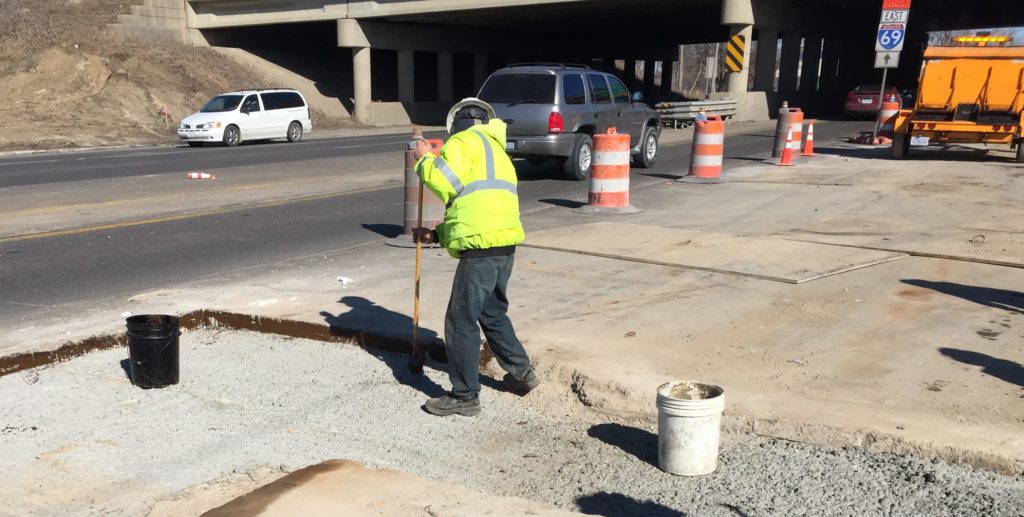Wintertime Patching of Potholes
It’s that time of the year again when asphalt contractors begin to shift gears from the long days and high temperatures of the summer to the dreaded office work and frigid cold of the winter. For many, the winter is a time to get caught up on administrative tasks and take a long, well deserved break from the season. However, winter brings a few difficult situations that asphalt contractors must face.
For starters, because of the lack of incoming work, revenue may come to a screeching halt, causing some contractors to lay key employees off during the winter months. Once the plants close for the winter, the season is essentially over because hotmix is no longer available. However, with the right equipment and process, asphalt contractors can keep their operation running year-round and keep a steady revenue flow through the winter.
Wintertime patching of potholes isn’t that much different than summer patching, and you can follow these key steps to ensure success.
Step 1: Prepping the Area for Pothole Repair
Preparation includes cleaning the area of any debris and drying out any moisture. Use a backpack blower or high pact air compressor. For drying, use a utility hand torch to remove any moisture that is present. Obviously removing moisture from the repair area may be more difficult during the winter because of snow, but it is an essential step in the process to ensure a tight bond and result in a high-quality repair.
Step 2: Applying Pothole Patching Material
The dilemma here is where to get hotmix during the winter if the plants are closed. You can go about it one of two ways: either use a hotbox reclaimer to reclaim bulk stored virgin mix overnight or use an asphalt recycling machine to reheat bulk stored virgin mix or millings in 10-20 minutes. By using a hotbox, you can reclaim and then maintain asphalt temperatures for 2 days. There is no need to worry about your material getting cold while in transport or while working. Most hotboxes are thermostatically controlled meaning you set the temperature of the mix and the hotbox will automatically monitor the temperature and reheat it whenever it gets below your setpoint.
Step 3: Compacting the Asphalt
Compaction is arguably the most important step in any asphalt application. Compacting asphalt at the hottest possible point achieves high compaction density and in turn a long-lasting repair even for wintertime patching. During the winter months your crew will need to work as one cohesive unit as fast as possible.
When the temperatures drop in the winter it is important that your crew works as fast as possible throughout the entire process.



